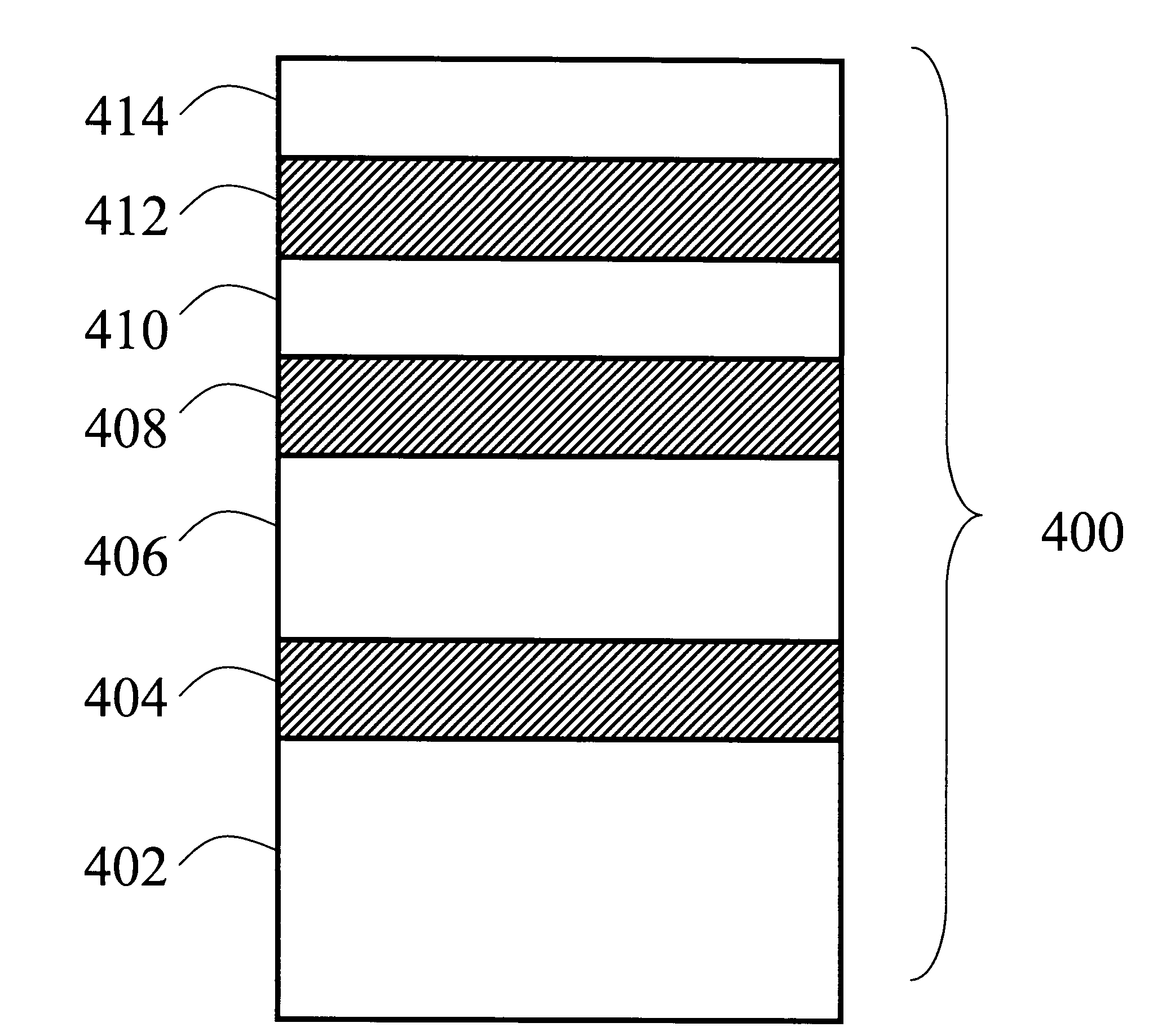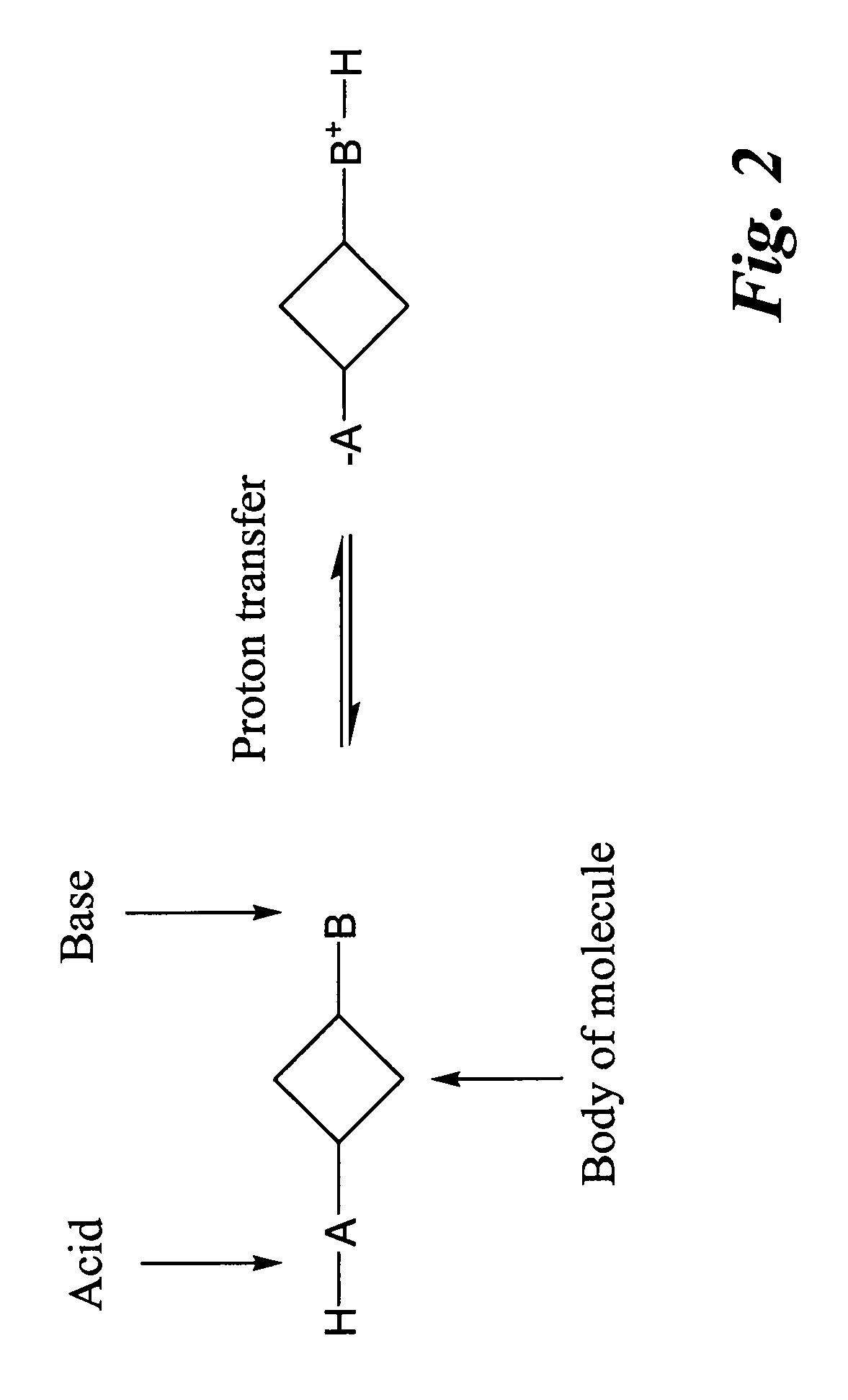Imaging System
a technology of imaging system and image, applied in the field of imaging members, can solve problems such as unwanted blue density observed while printing magenta dy
- Summary
- Abstract
- Description
- Claims
- Application Information
AI Technical Summary
Benefits of technology
Problems solved by technology
Method used
Image
Examples
example 1
[0115]This example describes the preparation and properties of novel fluorescein derivatives of formula I.
[0116]A. Novel fluorescein derivatives were prepared in the following general manner (exemplified by the preparation of Compound F-11).
Preparation of 4-propyl-1,3-dihydroxybenzene
[0117]i. 1,3-Dihydroxy-4-propanoylbenzene (10 g; 60.2 mmol) and trifluoroacetic acid (10 eq., 0.6 mol; 68.4 g) were stirred at room temperature until all the material was dissolved. To the resultant solution there was added triethylsilane (2.5 eq., 0.15 mol; 17.5 g) slowly at room temperature. After the addition, the reaction mixture was stirred with heating at 75° C. for 4 hours. The mixture was cooled to room temperature, quenched into water and extracted with dichloromethane to give two layers of oil product. The upper layer (excess triethylsilane) was decanted off and to the residual oil product there was added a mixture of hexane and dichloromethane (ca. 7:3 ratio) with heating to give a solid prod...
example 2
[0123]This example describes the preparation of novel rhodol-type derivatives of the invention. Derivatives Rh-1-Rh-7 were prepared in the following general manner (exemplified by Rh-7).
[0124]ia. Preparation of 2-(5-bromo-2,4-dihydroxybenzoyl)benzoic acid (Starting Material for Rh-1-Rh-6 and Rh-9).
[0125]Aluminum chloride (8.48 g, 64 mmol) was added to a stirring suspension of phthalic anhydride (2.36 g, 16 mmol) in tetrachloroethane (40 mL) under nitrogen. Nitromethane (6 mL) was added to dissolve the reactants. 4-Bromoresorcinol (3 g, 16 mmol) was added and the mixture continued to stir under nitrogen. The reaction was monitored by high performance liquid chromatography (HPLC) over a period of 2 hours. It was observed that the reaction had ceased within the first 30 minutes, with starting materials remaining. The solution was diluted with ethyl acetate (˜150 mL) and washed with 1M hydrochloric acid (2×100 mL). The product was extracted from the organic layer into a saturated soluti...
example 3
[0139]This example describes the preparation and properties of novel rhodamine-type derivatives.
General Procedure (Exemplified for Compound R-2):
[0140]A mixture of dichlorofluoran (5.55 g, 15 mmol), o-toluidine (5.2 g, 48 mmol), anhydrous zinc chloride (4.5 g) and zinc oxide (1.5 g) was stirred at 200° C. for 1.5 hours. The still-hot reaction mixture was then quenched with stirring into 8% hydrochloric acid solution (300 mL) and stirred at 90° C. for 30 minutes, then filtered. The filter cake was washed with water (100 mL), dried, and dissolved in warm methanol (100 mL). The solution was made basic by addition of a solution of concentrated ammonia solution (7 mL) in methanol (15 mL), then quenched with stirring into cold water (700 mL). The slurry was filtered, and the filter cake was washed with water (150 mL) and dried overnight under reduced pressure to give a dark purple solid (22 g). This material was triturated with hot methylene chloride (100 mL) and filtered. The filtrate wa...
PUM
| Property | Measurement | Unit |
|---|---|---|
| wavelengths | aaaaa | aaaaa |
| wavelength | aaaaa | aaaaa |
| wavelengths | aaaaa | aaaaa |
Abstract
Description
Claims
Application Information
 Login to View More
Login to View More - R&D
- Intellectual Property
- Life Sciences
- Materials
- Tech Scout
- Unparalleled Data Quality
- Higher Quality Content
- 60% Fewer Hallucinations
Browse by: Latest US Patents, China's latest patents, Technical Efficacy Thesaurus, Application Domain, Technology Topic, Popular Technical Reports.
© 2025 PatSnap. All rights reserved.Legal|Privacy policy|Modern Slavery Act Transparency Statement|Sitemap|About US| Contact US: help@patsnap.com



